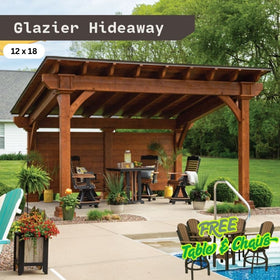512-777-0154

What Type of Foundation is Best for Tiny Homes? Options, Costs, and Building Requirements
Wondering what type of foundation is best for tiny homes? It depends on where you live, how much you want to spend, and whether your house stays put or hits the road.
Keep reading to find the one that keeps your tiny home safe, steady, and built to last.
Essential Foundation Requirements and Pre-Build Decisions
Before you even think about construction, take a step back. The foundation of your tiny home isn’t just concrete and bolts; it’s the part that decides how strong, safe, and stable your home will be.
The right foundation depends on how you plan to live. Are you building a permanent home or a moveable one? Is your land flat, rocky, or sloped? What’s your budget and your local climate like?
Answering these early questions saves time, money, and a lot of frustration later on.
Legal and Zoning Compliance: The ADU Factor
If your tiny home doubles as an Accessory Dwelling Unit (ADU), zoning laws will shape your choices. Many cities require ADUs to be built on permanent foundations. That rules out trailers or skids in most areas.
Before building, check your local zoning maps and regulations. You’ll want to know setback limits, property line distances, and what type of foundation your city approves for small structures. Doing this early means fewer surprises down the line.
Navigating Building Codes (IRC) and Permits
Tiny homes are now officially recognized under the International Residential Code (IRC), thanks to Appendix Q. This section covers height limits, stair requirements, and loft safety standards.
But every city interprets the rules differently. Before breaking ground, contact your local building department. You’ll likely need separate permits for grading, plumbing, electrical, and the foundation itself.
Skipping paperwork can lead to fines or worse, being forced to rebuild.
Related: What Are Micro Homes? The Definitive Guide to Size, Legality, and the Tiny Living Movement
Tiny Home Foundation Requirements for ADUs
If your tiny home is an ADU, your local code will expect certain things. That usually includes a frost-protected foundation, a system that’s anchored for seismic or wind loads, and proper utility hookups for water, power, and waste.
Meeting these standards isn’t just about following rules; it ensures your home is safe, stable, and easier to insure or finance later on.
Site Assessment: Soil Type, Climate, and Frost Line
Before choosing materials, test the ground beneath your feet. The soil, climate, and frost line all influence what kind of foundation will work best.
- Clay soil expands and contracts with moisture, which can crack concrete.
- Sandy soil drains well but may need reinforcement to stay stable.
- In cold climates, you’ll need foundations below the frost line to prevent shifting.
A professional soil test is a small cost that prevents big headaches later.
Choosing the Best Foundation for Sloped or Flood-Prone Land
Not every plot of land is perfectly flat. If yours sits on a slope or near a floodplain, pier and beam foundations are often the hero.
They lift your home above uneven ground and allow water to flow underneath instead of pooling around the structure. In flood-prone areas, that extra elevation can make the difference between a safe home and a soggy one.
Foundation Dimensions: How Big and How Deep?
Size and depth depend on your design and local requirements. Most tiny homes range from 8 to 10 feet wide and 20 to 30 feet long. Depth varies with frost levels—sometimes as shallow as a foot, sometimes over four.
Always base your foundation size on load calculations and soil conditions. A foundation that’s too shallow risks shifting, while one that’s too deep wastes money.
Comprehensive Breakdown of Tiny Home Foundation Options
Let’s get into the fun part: choosing your foundation.
Each option comes with trade-offs in cost, comfort, and complexity. Understanding how they differ helps you pick the right fit for your lifestyle.
1. Concrete Slab Foundation (Slab-on-Grade)
Concrete slabs are one of the simplest and strongest ways to anchor a tiny home.
Pros and Cons: Durability, Pest Resistance, and Access Limitations
They’re durable, low-maintenance, and naturally pest-resistant. Perfect for warm, dry areas. The downside? Access. Once the concrete is poured, there’s no easy way to reach plumbing or wiring underneath.
Comparing Monolithic vs. T-Shaped Slabs
- Monolithic slabs are poured all at once, making them affordable and quick.
- T-shaped slabs add extra footing below the frost line, giving more stability in colder regions.
Both types provide a solid base that can last decades with minimal upkeep.
2. Crawl Space Foundation (Stem Wall)
A crawl space sits between your home and the ground, offering easy access to pipes and electrical systems.
Benefits for Utility Access and Elevated Protection
This design keeps your home above moisture, helps with ventilation, and allows room for repairs or upgrades. It’s ideal for regions that get heavy rainfall or mild flooding.
Importance of Proper Ventilation and Insulation
The key is airflow. Without it, crawl spaces can trap moisture and grow mold. Adding vents and perimeter insulation keeps things dry and energy-efficient.
3. Pier and Beam Foundations (Including Screw Piles)
If your land is uneven or you want flexibility, pier and beam foundations are a smart pick.
Advantages for Uneven Terrain and Semi-Permanent Placement
They work well on slopes, require minimal excavation, and can even be adjusted later. Plus, the open space beneath helps prevent moisture buildup.
Using Helical Piers for Minimal Environmental Impact
Helical piers, also known as screw piles, are an eco-friendly option. They twist into the ground instead of being dug in, reducing soil disturbance and installation time.
4. Full Basement Foundation
A basement foundation turns a tiny home into a space with serious storage potential.
Maximizing Storage Space and Long-Term Value
It can house utilities, workshops, or even a small guest area. For those planning to stay long-term, a basement adds comfort and boosts property value.
Cost and Viability in High Water Table Areas
However, basements are pricey, often starting at $30,000. In areas with high groundwater, they can flood easily, making them less practical.
Foundation Cost, Plans, and Specialized Materials
Foundations vary in price more than most people expect. Beyond materials, you’ll need to budget for soil testing, excavation, and drainage.
The Full Tiny House on Foundation Cost Breakdown
Understanding price ranges early helps set realistic expectations.
Cost Per Square Foot Comparison (Slab vs. Basement)
- Slab: $4–$7 per square foot
- Pier and Beam: $5–$10 per square foot
- Basement: $10–$25 per square foot
A small 200-square-foot home can cost anywhere from $8,000 to $30,000 just for the foundation.
Hidden Costs: Site Prep, Excavation, and Soil Testing
Don’t forget the extras. Grading, leveling, and drainage often add 10–20% to the total. A flat, ready lot is rare; plan accordingly.
Designing Your Structure: Tiny House on Foundation Plans
Every great build starts with a plan. Your blueprint determines load distribution, anchor points, and how utilities run beneath the structure.
Where to Find Structural Blueprints and Floor Plans
You can find engineered plans online or through architects who specialize in tiny homes. Look for ones that offer options for both mobile and fixed foundations.
Flexibility in Design: Integrating Lofts and Utilities into the Plan
A good plan allows flexibility. Whether adding a sleeping loft or hiding pipes in clever spots, design decisions early can save thousands later.
Is a Cinder Block Foundation for Tiny House a Good Idea?
Cinder blocks might sound simple and cheap, but not all blocks are equal.
The Risks of Unreinforced Block vs. CMU (Concrete Masonry Units)
Basic cinder blocks can crumble under heavy loads. CMUs, when filled with concrete and reinforced with steel rebar, provide much better strength and stability.
The Role of Insulated Concrete Forms (ICF) for Superior Efficiency
For energy efficiency, ICF systems combine structure and insulation in one layer. They’re strong, quiet, and excellent at keeping interior temperatures consistent.
Building Your Dream: DIY vs. Professional Tiny House on Foundation Builders
Building your own foundation can be rewarding, but it’s not for everyone. Knowing when to DIY and when to hire a pro can make or break your project.
The DIY Foundation: When to Tackle it Yourself
Some homeowners love the challenge of building from the ground up.
Gravel Pads: The Most Affordable DIY Option for Park Models
A gravel pad is simple, cheap, and easy to level. It’s best for movable homes or park models that don’t need permanent anchoring.
Critical Steps for Installing a DIY Pier Foundation
When using piers, measure carefully and check your levels often. Even a small misalignment can lead to uneven floors or structural stress later.
How to Vet and Hire Tiny House Foundation Builders
If DIY isn’t your thing, hiring a builder can save time and stress.
Finding Builders Specializing in Small Footprint and Modular Homes
If you go pro, look for builders with experience in small or modular structures. They’ll understand tight spaces, efficient layouts, and lightweight materials.
Questions to Ask About Permits, Inspections, and Warranties
Before signing anything, ask:
- Do you handle local permits and inspections?
- What kind of warranty do you offer?
- Are you familiar with IRC Appendix Q?
The right builder won’t just pour concrete—they’ll help you navigate the whole process smoothly.
Making the Final Foundation Decision
So, what type of foundation is best for tiny homes? The best one fits your lifestyle, your land, and your budget.
If you want to move often, a trailer or pier foundation makes sense. For long-term living, concrete slabs or crawl spaces offer lasting durability.
Think about climate, local laws, and how you plan to live day-to-day. A strong foundation isn’t just about structure; it’s about peace of mind, knowing your tiny home stands firm no matter where life takes you.









